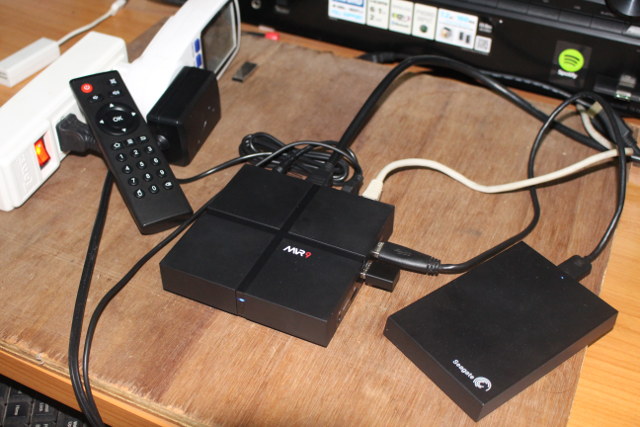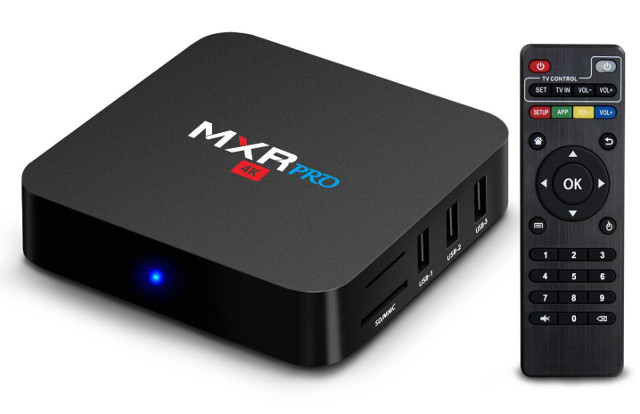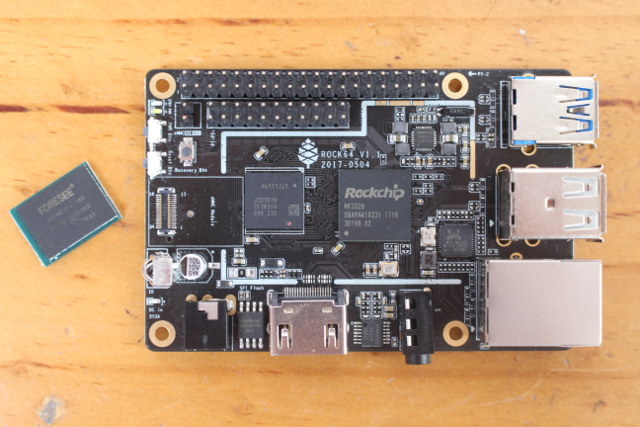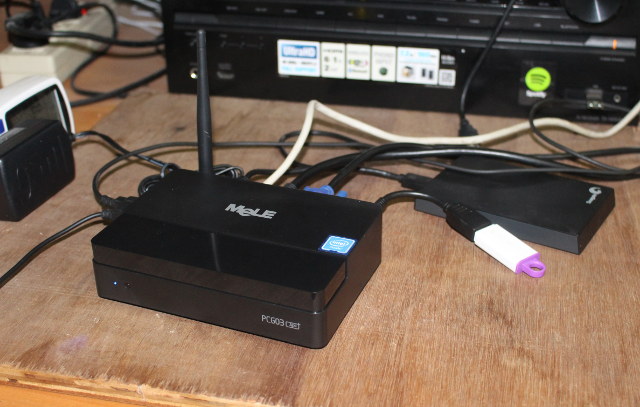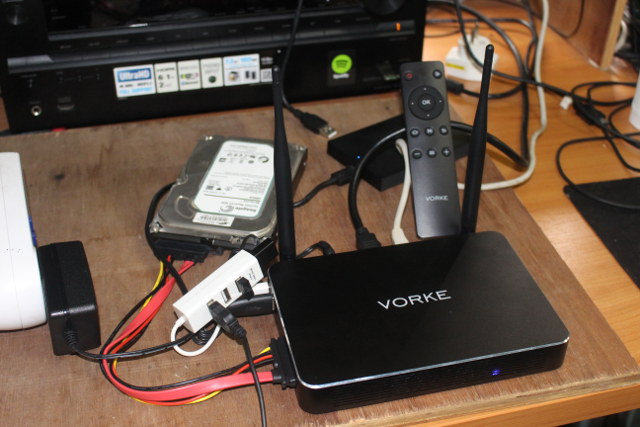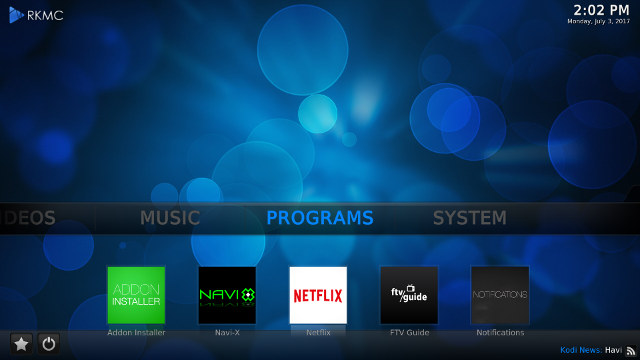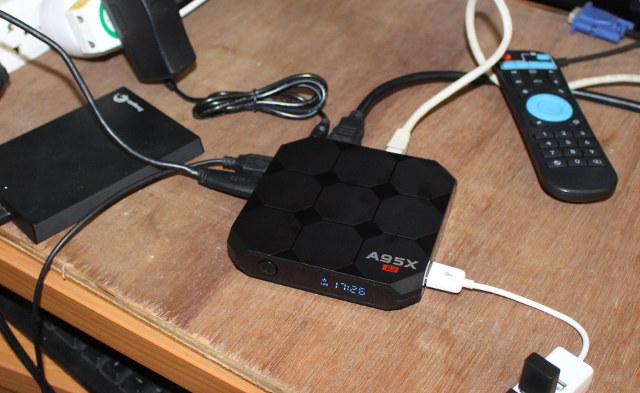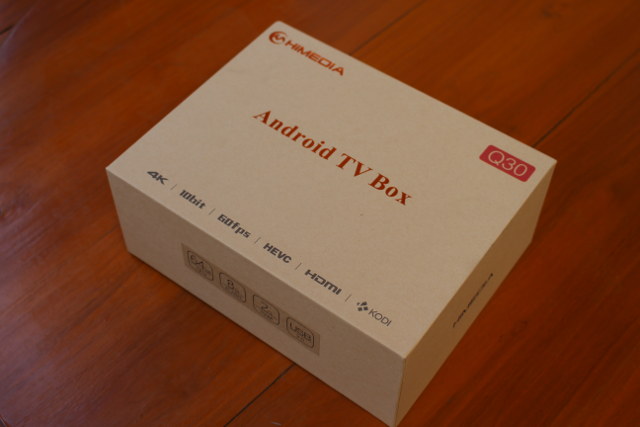Bqeel MVR9 is another TV box powered by Rockchip RK3328, but that model comes with Gigabit Ethernet and 2GB RAM contrary to the cheaper A95X R2 TV box I previously reviewed. If you want to check thsee some pictures read “Bqeel MVR9 TV Box Review – Part 1: Specifications, Unboxing and Teardown“, as in this second part I’ll focus on the firmware, and we’ll see if the claims of better 4K video playback thanks to DDR4, optimized RKMC with HD audio pass-through, YouTube 4K, and DRM support are true. First Boot, Setup, and First Impressions One good thing about Bqeel MVR9 is that it comes four 4 USB port, so I did not need to use a USB hub to connect my two RF dongles for MINIX NEO A2 Lite air mouse and Tronsmart Mars G01 gamepad, a Seagate USB 3.0 hard drive, and a USB keyboard I normally use […]
Rockchip RK3328 based MXR PRO TV Box Boasts 4GB RAM, 32GB Flash
Most users of TV boxes will do just fine with 2 GB RAM, especially with lower end ARM Cortex A53 systems, but if you have somewhat low processing needs, but high memory requirements, MXR Pro TV box powered by Rockchip RK3328 quad core Cortex A53 processor, and running Android 7.1 comes with 4GB RAM, and 32GB storage. MXR PRO 4K TV box specifications: SoC – Rockchip RK3328 quad core Cortex A53 processor @ 1.5 GHz with Mali-450MP2 GPU System Memory – 4GB DDR3 Storage – 32 GB eMMC flash + SD card slot Video Output – HDMI 2.0a up to 4K @ 60 Hz with HDR10 and HLG support, 3.5mm AV port (composite) Video Codec – 4K VP9, H.265 and H.264. 1080p VC-1, MPEG-1/2/4, VP6/8 Audio – Via HDMI, AV port (stereo audio), and 3.5mm coaxial S/PDIF jack Connectivity – 10/100M Ethernet, single band 802.11 b/g/n WiFi USB – 3x […]
ROCK64 Board Review – Part 1: eMMC Flash Module, Android 7.1 Firmware, Benchmarks, and Kodi
ROCK64 is the second ARM Linux development board by Pine64 that is based on Rockchip RK3328 processor, instead of Allwinner 64 for Pine A64 board, and while both processors comes with four Cortex A53 cores, the Rockchip processor offers a faster GPU, 4K @ 60 Hz video support, as well as USB 3.0 support. I’ve got a sample with an eMMC flash module, and I’m going to test it first with Android 7.1, since those were the only firmware images currently available on the Wiki, but Linux will be available before the board ships publicly at the end of July. Rock64 Linux Ports Status There are now at least three Linux ports in progress: ayufan’s Debian Jessie and Ubuntu Xenial images which are now in pre-release, but should officially be released next week. Arch Linux ARM with no pre-built Rock64 images yet Fedora 25 minimal Image The Yocto Project support […]
Review of MeLE PCG03 Apo Fanless 4K Mini PC – Part 2: Windows 10, Benchmarks, and Kodi
MeLE PCG03 Apo is an update to MeLE PCG03 mini PC, and one of the rare Apollo Lake mini PCs to be both fanless, and support HDMI 2.0 output. I’ve already checked out the hardware design in “MeLE PCG03 Apo Fanless Apollo Lake mini PC Review – Part 1: Unboxing and Teardown“, so in the second part of the review I tested Windows 10, focusing on HDMI 2.0 features, audio pass-through in Kodi, and performance and stability tests to see how well it compared to similar actively cooled mini PCs such as Voyo V1 VMac mini. MeLE PCG03 Apo Setup and System Information I connected a USB 3.0 drive to one of the USB 3.0 ports, a USB keyboard and mouse, and an RF dongle for a wireless gamepad to the other USB 2.0/3.0 ports, as well as USB type C to micro USB adapter itself connected to a micro […]
Vorke Z3 Rockchip RK3399 TV Box Review – Part 2: Android 6.0 Firmware
Vorke Z3 is another mini PC / TV box powered by Rockchip RK3399 hexa core processor with two Cortex A72 cores, and two Cortex A53 cores making it theoretically one of the fastest TV boxes on the market, excluding NVIDIA Shield Android TV which is well ahead of the competition, albeit with poor worldwide availability. I’ve have already shown Vorke Z3 hardware inside out, so in the second part of the review, I’ll focus on testing the firmware including video playback, and the system performance, and see how it compares to the similar Yundoo Y8, which I reviewed last month. First Boot, Setup, and First Impressions One the selling point of Vorke Z3 is its SATA connector, so I connected a 1TB 3.5″ SATA drive first, as well as Seagate USB 3.0 drive (1TB) to the USB 3.0 port, I also added a USB hub to connect a USB keyboard, […]
How to Install RKMC “Kodi for Rockchip” App in your TV Box
I’ve started playing with Vorke Z3, an Android 6.0 TV box based on Rockchip RK3399 , and saying that Kodi 17.3 – installed from the Google Play Store – is not working so well is an understatement. The other Rockchip TV boxes I’ve recently reviewed with Android 6.0.1 such as Yundoo Y8 and A95X R2 are all using TVMC, a fork of Kodi 16.1 specifically designed for Rockchip devices. However, there’s no source code for that app, but a Rockchip engineer is maintaining his own fork of Kodi, with the code and some binaries libraries released on Github. The project is called RKMC. I did install the app, but I misunderstood part of the instructions at first, and the device would not boot anymore. I lost many hours of work, as I had to reflash the firmware. So I’ll show how I installed it in Vorke Z3 TV box. You […]
A95X R2 TV Box Review – Part 2: Android 7.1, Video & Audio Tests, and Benchmarks
In the first part of A95X R2 Rockchip RK3328 TV box review, I listed the specifications of the device, took a few photos, and reported about the chip used in the PCBA. I’ve now had time to play with the box, so I can report about my experience with Android 7.1, video & audio capabilities, and the performance of the device in the second part of the review. First Boot, Setup, and First Impressions I connected a USB 3.0 hard drive to the USB 3.0 port of the box, a USB keyboard to one of the USB port to take screenshots, and a USB hub with the RF dongles for my air mouse and gamepad in the remaining USB 2.0 port. I completed the hardware setup with Ethernet and HDMI cables, as well as the power supply. I then pressed the power button on the unit to start it up, […]
HiMedia Q30 (Hisilicon Hi3798MV200) Android TV Box Review – Part 1: Unboxing and Teardown
I’ve often read praises about HiMedia TV boxes in the comments section of this blog, but so far, I had never tested any of their products. This is about to change, since the company has sent me their latest HiMedia Q30 TV box running Android 7.0 on Hisilicon Hi3798MV200 processor, a cost-down version of Hi3798CV200 processor with the same CPU,a lower-end Mali-T450 GPU, about the same media capabilities, and less I/Os. I’ll start the review by checking out the TV box and accessories, as well as the PCBA, before reporting the experience with Android 7.0 firmware in several weeks. HiMedia Q30 TV Box Unboxing I received the device is a package that read “HIMEDIA Q30” and “Android TV Box”, and shows some of the key features like 4K @ 60 fps, 10-bit HEVC, HDR and Kodi support. The devices ships with an IR remote control with IR learning function for […]


